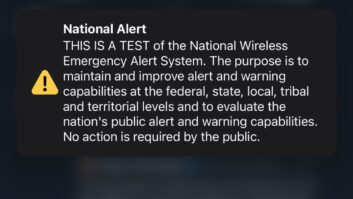A group of emergency warning advocates is working to help states rewrite their EAS plans to reflect the upgrade to the Common Alerting Protocol and better promote preparedness at the state and local level.
The Broadcast Warning Working Group has developed a sample plan for State Emergency Communication Committees to follow that offers suggestions of best practices on how to include the new CAP provisions. While the CAP requirement is a national requirement, warning advocates reiterate that state plans are key in how local alerts are delivered.
The SECC sample plan was pulled from the rewrite of the California state plan along with elements from other state plan rewrites like Washington state, said Richard Rudman, a core member of BWWG.
“I believe Alabama and Washington state have gone a long way on their rewrites, but I would think that no one can submit a new state plan to the FCC for its approval until [the FCC] incorporates updated monitoring assignments for their local areas,” said Rudman.
There is no absolute requirement for states to have an EAS plan; but if they do, the commission must review the document to make sure it’s consistent with national EAS plans and FCC regulations, according to the FCC’s Public Safety & Homeland Security Bureau.
The sample plan includes three basic purposes: it outlines howthe chief executive officerofthe state, the governor, the National Weather Service and authorized local/regional government entities canprovideemergencymessagesaffectingalargearea,multipleareas,ortheentire areaofthestate. It also provides guidanceforthebroadcast andcableindustryintheuseofthe Emergency AlertSystem. And it outlines the framework for how emergency warning centers and the broadcast community can work together.
The BWWG’s sample SECC plan is available here.
The deadline for broadcasters to have Common Alerting Protocol-compliant EAS equipment in place is June 30, 2012. No further deadline delay by the FCC is expected










